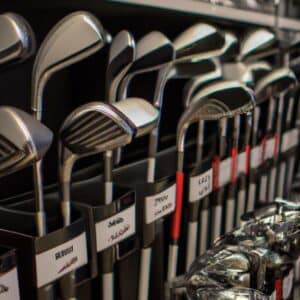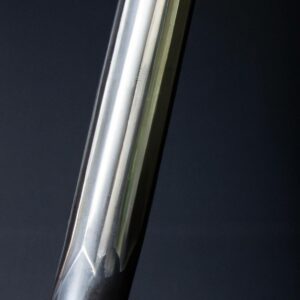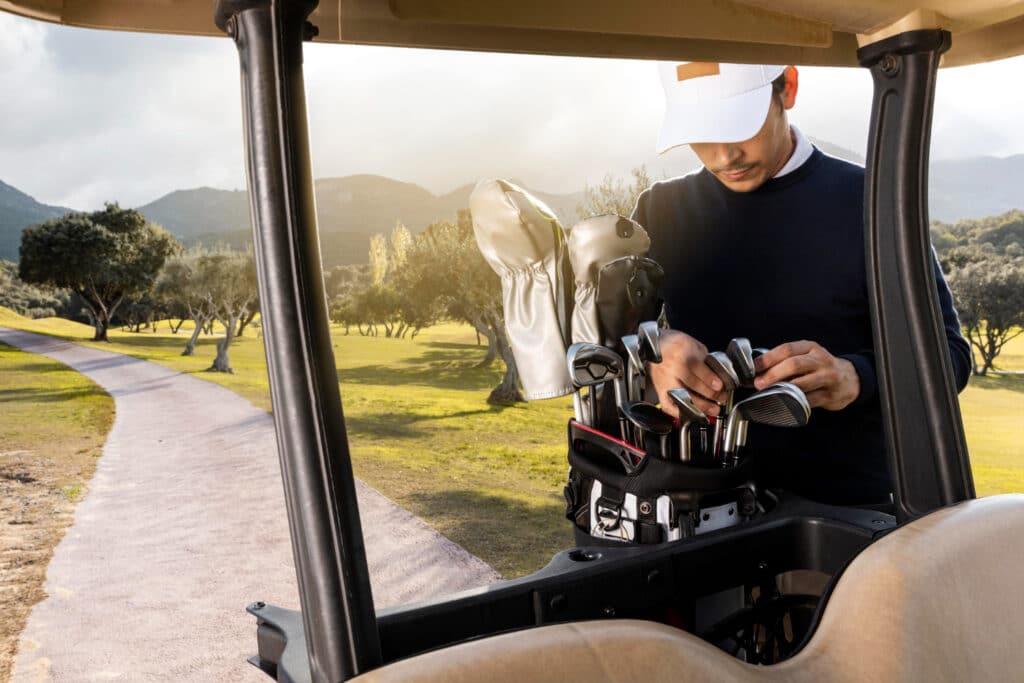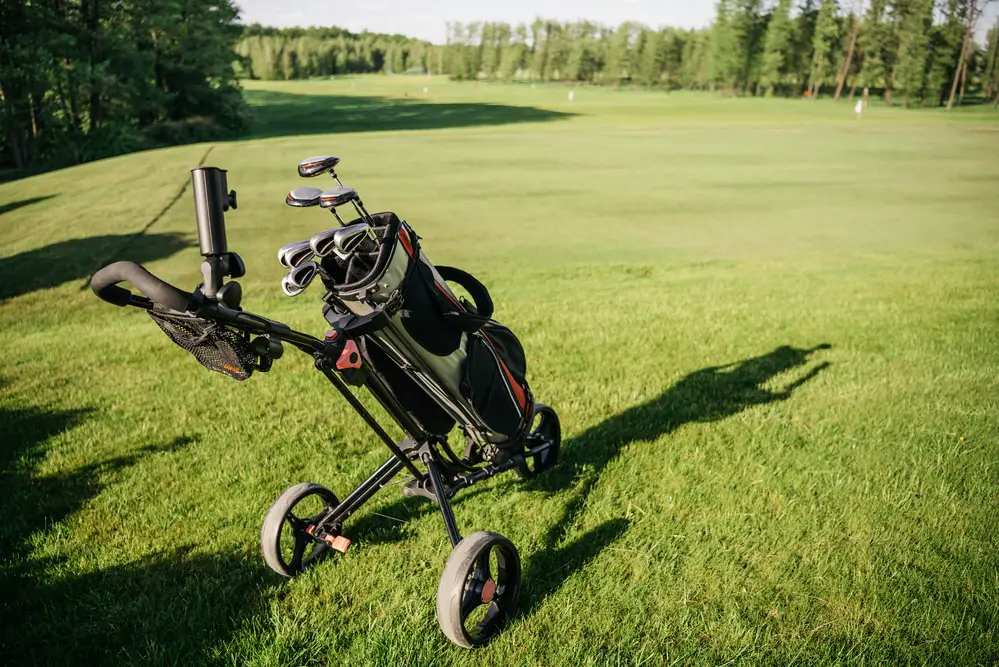Last Updated on October 13, 2023
Are you looking to buy a set of Callaway golf clubs but are worried about the authenticity? You’re not alone! With counterfeiters taking advantage of unknowing buyers, it’s important that we all know how to spot fake Callaway golf clubs. In this article, we’ll discuss some tips and tricks for identifying genuine Callaways so you can purchase with confidence. Let’s get started!
Identifying Visual Differences
Moving on, it is important to be aware of the visual differences between authentic Callaway golf clubs and counterfeits. Spotting a fake can help you save money as well as protect yourself from potential scams and fraud. Here are some tips for spotting any visual discrepancies when shopping for Callaway golf clubs:
- Check craftsmanship – Authentic Callaway clubs have superior craftsmanship, so look out for small details such as accurately placed logos and high-quality paint jobs.
- Verify the clubhead’s shape – Fake clubs often feature inconsistent shapes or inaccurate dimensions compared to an original model design.
- Evaluate the weight distribution – Counterfeit clubs usually lack proper weight balance throughout the head and shaft, making them feel lighter than genuine models.
- Inspect the grip material – Genuine grips typically consist of higher quality rubber materials that are both soft to the touch yet durable in nature, while counterfeit versions may feel cheap upon contact with your hands.
- Lastly, always make sure to double check all sources prior to purchasing any Callaway golf equipment online or offline; doing this will further ensure that you receive only authentic products at fair prices.
Checking The Serial Number
The serial number of a Callaway golf club is one of the best ways to tell if it’s an authentic or fake product. You can check the serial number by doing a simple online lookup. It’s important to remember that not all counterfeiters will provide accurate information, so verifying your results with additional resources is highly recommended.
When you’re checking the serial number, look for any discrepancies in the format and spelling. A genuine Callaway club should have a unique nine-digit code beginning with either C, or I followed by two letters and three numbers. If there are any inconsistencies, such as extra characters or digits missing from the sequence, then it’s likely that the item is counterfeit. Additionally, you can use an authentication service provided by Callaway Golf itself to verify whether or not your serial number is valid. This provides peace of mind when purchasing second-hand clubs online.
Comparing Pricing

Now that you have checked the serial number, another way to spot fake Callaway golf clubs is to compare pricing. Price comparisons are a great indicator of authenticity. When looking at prices on different websites or stores, it should be noted whether the cost comparison suggests low prices or high prices. If an online store lists what appears to be an original club for much cheaper than other places, this could be a sign that it’s not genuine.
It is important to keep in mind that sometimes sales and discounts occur with authentic products, too; however, if a discount seems unusually large, then there may be cause for suspicion. Moreover, when comparing pricing, always double check that all product details match up before making any purchases.
It’s also worth researching the company selling the item: do they have positive reviews? Are their contact details readily available? Do they offer guarantees and money-back policies? All these factors can help you make informed decisions about where to buy your equipment from. So when in doubt, take time to research and verify so you don’t end up paying for something that isn’t real!
Examining Labeling And Packaging
When examining the labelling and packaging of fake Callaway golf clubs, there are a few key things to look out for. The first is the logo; genuine Callaway products will have a clear, crisp logo displayed prominently on the product or its packaging. Second, check for any misspellings or misprints in the text on the item or package. Thirdly, inspect the overall quality of both the item itself as well as its packaging; if it either appears sloppy or unprofessional, it may be counterfeit.
Finally, check that all relevant information, such as barcodes and serial numbers, are present – these should match with what is listed on the official website of Callaway to ensure authenticity. If any of these points seem off, it’s likely you’re dealing with a fake product and should take necessary precautions accordingly.
Inspecting For Poor Quality Craftsmanship
When inspecting for poor quality craftsmanship, it’s important to know what is often seen in counterfeit Callaway clubs. Poorly crafted counterfeits will typically have discrepancies between the club and its original counterpart. To help spot these discrepancies, we can look at certain aspects of the golf equipment.
| Discrepancy | Physical Inspection |
|---|---|
| Finish Quality | Deteriorated paint jobs or dull finishes on head/shafts |
| Logo Placement | Logo not aligned with manufacturer standards (distorted shape) |
| Stamps & Engravings | Stamps may be off-centre or missing altogether |
| Weight Distribution | Weight distribution should feel balanced during a swing test |
Look out for any irregularities, such as noticeable scratches, chips, dents or other imperfections that cannot be explained away by normal wear and tear. When handling the suspicious clubs, also pay attention to how well they fit together; if there are any gaps between the shaft and head, then you could be looking at a fake set of clubs. Additionally, inspect the grips carefully, making sure that they are indeed genuine Callaway products. Lastly, compare logo placements across different clubs within the same set – this should provide an extra layer of security when determining the legitimacy of your golf equipment. Taking all these into account will give you peace of mind knowing that you’re investing in authentic Callaway golf clubs!
Investigating Manufacturer Claims
Once you’ve inspected the craftsmanship of your club, it’s time to investigate manufacturer claims. When verifying authenticity, researching reviews and identifying fake clubs is key. Start by visiting the Callaway website and looking for information about the model of the golf club in question. If there are any discrepancies between what you find online and the item that you have, then this may be a sign of counterfeiting. It’s also important to investigate sellers when searching for genuine items – look for customer feedback or contact the seller directly if necessary. Check out forum posts from other users who have purchased similar products to see if they can offer insights into quality control issues or potential scams associated with certain vendors. Additionally, consider seeking professional advice to help ensure that you’re buying an authentic product rather than a counterfeit one. With these steps completed, you’ll be well on your way to acquiring a genuine set of Callaway golf clubs!
Assessing Materials Used

The best way to spot fake Callaway golf clubs is to assess the materials used in their construction. The quality of the material should match that of authentic clubs, and it’s important to note any difference in terms of texture, weight or feel. Additionally, pay attention to the selection of materials, as they should be consistent throughout all the components of the club. Genuine Callaway clubs use only premium grade materials for maximum durability and authenticity. To determine this, inspect each element, such as shafts, grips and heads, to make sure that there are no discrepancies in quality between them. Finally, a good indication of an authentic product is if it has been certified by an accredited body that verifies its materials, design and functionality. This can give you peace of mind when making your purchase.
Looking At Logos And Branding
Another way to spot fake Callaway golf clubs is by looking at the logos and branding. To do this, it’s important to have an understanding of what authentic logos from genuine clubs look like. You should also become familiar with counterfeit branding that might be used on a knockoff club or product. Logo recognition plays an important role in spotting counterfeits as well as brand recognition.
When examining the logo, check for detail and design elements such as font type, size, shape and accuracy of colour tone. If there are any discrepancies between what you know to be true of the authentic logo compared to the one on the club, then chances are it isn’t real. Additionally, if the brand name appears anywhere outside its usual placement (e.g., near grip), then it may not be a legitimate Callaway golf club either. Taking these extra steps can offer peace of mind when assessing whether or not a club is genuine or fake.
Frequently Asked Questions
Are There Any Counterfeit Callaway Golf Clubs Being Sold Online?
Are there any counterfeit Callaway golf clubs being sold online? This is a question that many prospective buyers may ask when looking to purchase a new set of clubs. Unfortunately, the answer is yes; there are indeed counterfeits of Callaway golf clubs available for sale on the internet.
Counterfeiters often use various techniques and materials to create replicas of genuine Callaway equipment. These fakes can be difficult to spot unless you know what signs to look out for:
- Poorly stamped logos or forged serial numbers
- Unusual paint jobs with incorrect colours or finishes
- Misaligned club heads that do not match their shafts correctly
- Unexpected weight differences in comparison to other known authentic models
These telltale signs should give you an indication as to whether or not a particular product is genuine or fake before making your purchase decision. It’s important to remember that if something looks too good to be true, it likely is! Do some research ahead of time and make sure you don’t get caught up in purchasing one of these counterfeits instead of a real deal from Callaway Golf.
How Can I Tell If A Callaway Golf Club Has Been Used Before?
When buying preowned Callaway golf clubs, it’s important to make sure you can identify the condition of the club. Knowing how to tell if a Callaway golf club has been used before is essential in ensuring your purchase is authentic and genuine. There are several indicators that can help you determine whether or not the Callaway club has seen any use.
First, look for signs of wear on the face of the golf club head. This could include scratches or marks from previous play on the grooves as well as general scuffing near the edges. The paint may also be faded or chipped away in areas due to regular contact with turf and other surfaces during a swing. Additionally, inspect any rubber components such as grips and shaft covers for additional indications of prior usage; they should have minimal damage and show no signs of hardening or cracking, which often occurs over time when exposed to outdoor elements.
For those who don’t feel comfortable assessing their own preowned Callaway golf clubs, there are various third party services available that specialize in evaluating Callaway club condition. They will typically provide an evaluation report listing potential issues along with recommendations about repairs needed before playing rounds with these clubs. Taking advantage of these resources can help ensure quality assurance when purchasing used Callaway golf clubs online so buyers know exactly what they’re getting into beforehand.
Are Callaway Golf Clubs Made Of The Same Materials As Other Brands?
When it comes to golf clubs, many players are wondering if Callaway Golf Clubs are made from the same materials as other brands. It is important to understand that while all quality golf equipment manufacturers tend to use equally high-quality materials in their manufacturing process, there may be some subtle differences between different brands.
Comparing the materials used by Callaway and those of other companies can be a tricky business since each one has its own standards for quality control and production. Generally speaking, most of the major golf club manufacturers will use similar grades of steel or graphite shafts and grips when creating their products. However, they may vary on how much material is used during the manufacturing process, which could affect playability or durability. Additionally, certain features, such as face inserts, might also differ between brands due to design preferences or cost-cutting measures.
Ultimately, understanding what goes into making each brand’s clubs can help you decide which ones best meet your needs as a golfer. This includes researching everything from the type of materials used to whether or not special technologies have been incorporated into them. Doing so should provide you with enough information to make an informed decision about which set of golf clubs will give you the performance you’re looking for.
Conclusion
In conclusion, it’s essential to be aware of the differences between genuine Callaway golf clubs and counterfeit ones. Knowing how much a new Callaway club should cost is helpful in spotting fakes as well. Additionally, being able to tell if a used Callaway has been tampered with can help you avoid buying something that won’t provide the same performance or quality as an authentic one. Lastly, there are some distinct materials and construction methods unique to Callaway products which other brands don’t use – so by paying attention to these details when examining a potential purchase, you’ll be better equipped to make sure your money isn’t going towards a fake product! All in all, doing research on what makes a real Callaway golf club will ensure I’m getting my hands on the best possible equipment for my game.



